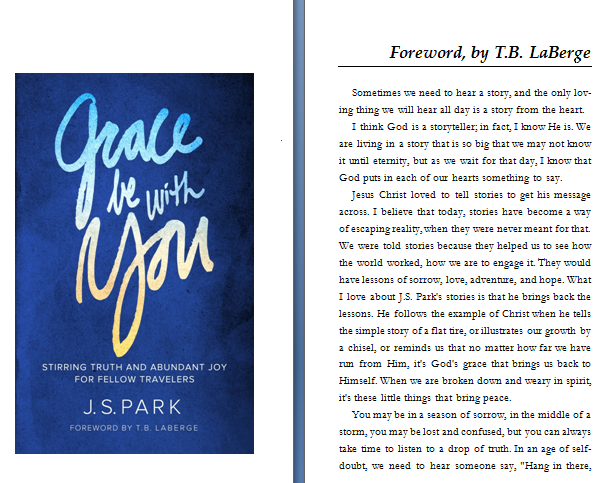This is the Preface for my book Grace Be With You. The Preface is about the gravitational power of story that connects us. The book is a compilation of my stories, encouraging quotes and poems, and everyday encounters from the road to the hospital to cafes and gas stations. Be blessed, dear friends.
—
There’s an old Star Trek episode where a particular alien species, the Tamarians, can only communicate in images and allegories. As the helpful android, Lt. Commander Data, puts it:
“Their ability to abstract is highly unusual. They seem to communicate through narrative imagery, a reference to the individuals and places which appear in their mytho-historical accounts.”
This strange constraint plays out to amusing fashion throughout the episode, as each party is frustrated by their miscommunication, and the tension nearly boils over into a knife-fight and all-out war (maybe your idea of amusement is different than mine). By the end, one of the Tamarians sacrifices himself in order to create a heroic narrative that both his people and the Federation can understand. It succeeds; this act of nobility becomes the bridge towards peace. The great Captain Picard realizes, “The Tamarian was willing to risk all of us, just for the hope of communication—connection.”
We’re not much different than the Tamarians. We risk the friction of our jagged edges to connect, not merely by formulas or flowcharts, but by a sloppy crawl through our shared, lived-in journey. We crave a common vocabulary beyond the heavy anvils of prose, crafted from imagination and our unified experiences.
Stories contain power because they seem to unveil secrets that have long been muddled, as if we’re unearthing lost royal treasure. But more than that, stories are a connective tissue, bringing us together by the longing and landing of a resolution.
Since a narrative thrust is essentially driven by an unresolved tension, with unassailable obstacles besetting a goal on every side, we discover in them the depth of our courage and cowardice, and we find out how to be. We find what we’re meant to look like.
We find, perhaps unwillingly, that we are not always the heroes, but in need of rescue: because we’re so often the cause of our own tension. And this is what puts us in the same boat, the same battle. The best stories require first an examination of our limitations, and then a cooperation as equals, through a slow-burning realization that we are not opposed to one another, but can reach the same goals with a little spunk and ingenuity. From Star Wars to The Karate Kid to The Lord of the Rings to Up, from the Epic of Gilgamesh to the Odyssey to a genie in a bottle, these are tales told side-by-side. We find we are fellow travelers, not so different, really, with a universal desire for shalom, a harmony—and we can’t get there alone. Heroes cannot fly solo, and villains are not beyond change.
Stories and symbols have a way of disarming us, too, getting to the inside of the matter with gentle precision. Propositions are a bit like bricks and beams: necessary for the foundation, but soon rigid and inflexible. Narratives and metaphors have a dynamic of growth to them, like seeds pushing through the dirt into the sun, and they give breath. Or maybe, as one theologian said, they are windows that light up the house and give it air. It’s why Nathan the prophet did not approach David with lectures and bullet points—”Three reasons that adultery and murder are bad!”—but instead with the innocent story of a poor man and his ewe lamb, ending on a twist that David could not negotiate. It forced David to rise from the dirt, into light.
Jesus himself spoke in parables with great aplomb, from mustard seeds and millstones to swords and sparrows to wedding feasts and rebel-runaways. Jesus’s disciples often had trouble deciphering his parables, which Jesus seemed to deliberately obscure at times—but ultimately, the parables were pointing to a future work on a cross and in a tomb. His stories pointed to his heart, and his heart sculpted the greatest story of them all: a final sacrifice to bring us peace with God and one another. He spoke of rescuing us, because we could not do that on our own. We were never meant to.
Only Jesus could become our bridge of peace, our shalom. And this kind of love is not merely the royal treasure, but the very purest stone from which all treasures are made.
The following pages are much like rotating the facets of such a jewel, pointing to the pulse of the galaxy-sculptor. These stories and poems and thoughts are chiseled by joy, sorrow, failure—and the great love that has cast a shadow on them all.
My hope is that we meet somewhere between the words, to connect, because I believe this is the truest stuff of life. Stories help us to mesh in this tapestry, that in our overlap, we’d find strength hand in hand. I’m excited. I’ll see you there.
— J.S. Park // Grace Be With You
Photo at top by sonlight972, used with permission.








